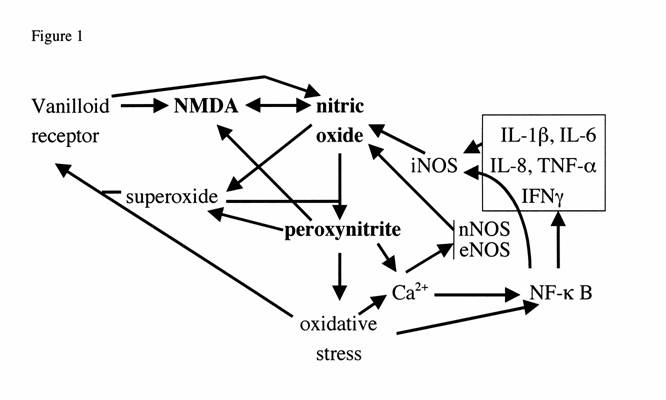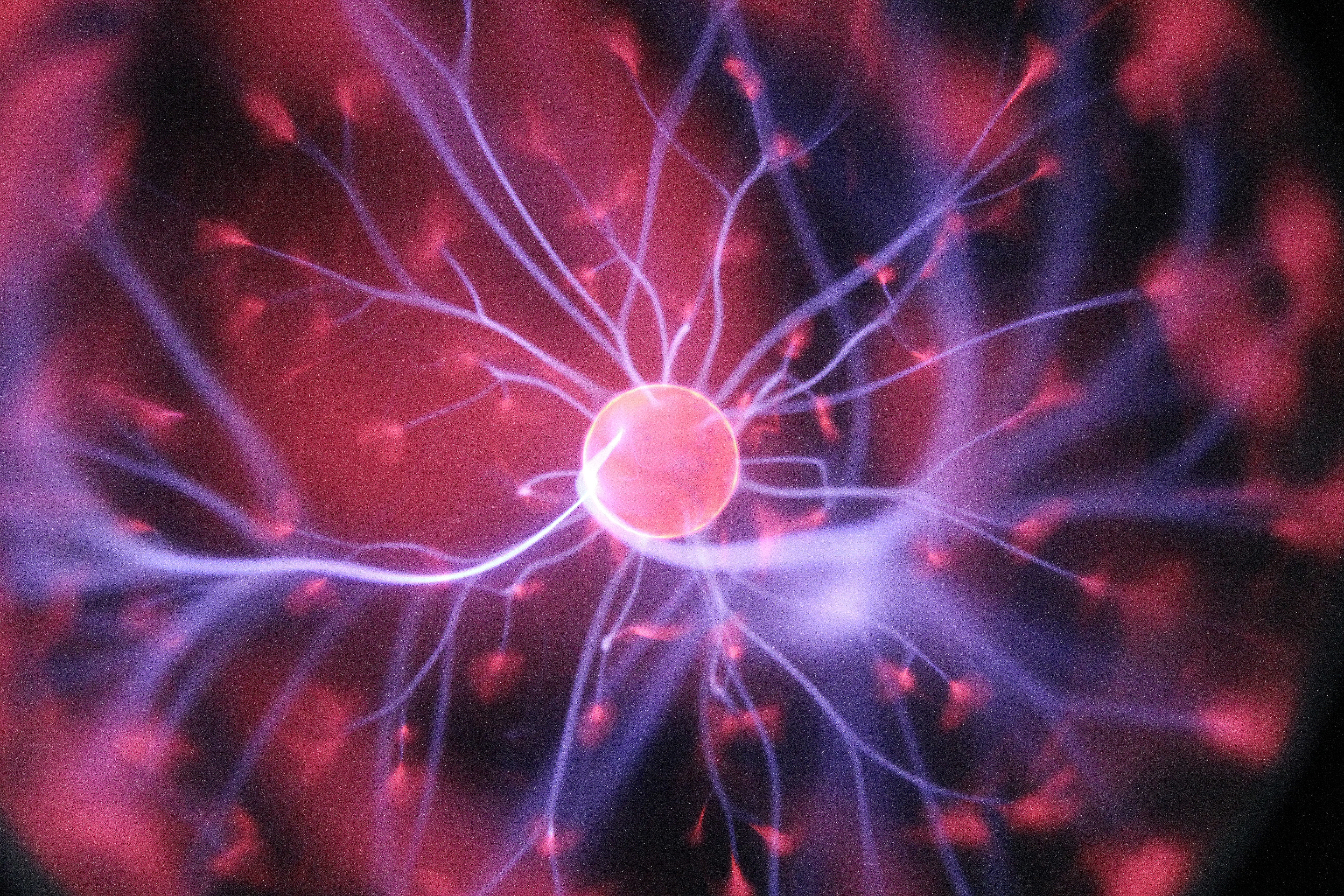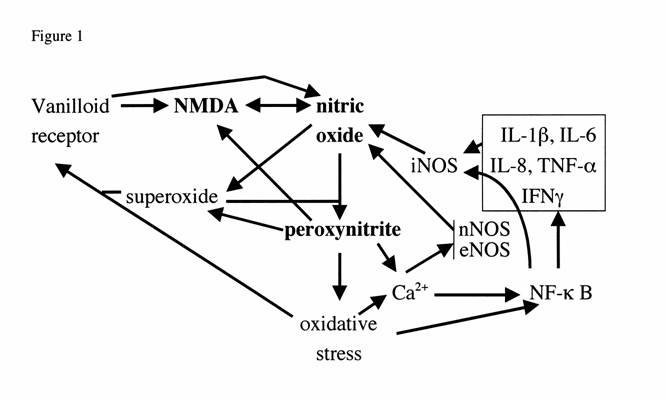Here are some thoughts about what is/was going on in our floxed bodies.
First, here’s my typical disclaimer. I’m not a doctor or scientist. I’m doing my best to put together this information, but I could be wrong. I do my best to be right and I back up my assertions with peer-reviewed journal articles.
As I mentioned in Article Breakdown – “Mechanisms of Pathogenesis in Drug Hepatotoxicity Putting the Stress on Mitochondria,” I believe that this paragraph describes much of what occurs in floxed cells:
“Increased steady-state levels of mitochondrial superoxide, arising from reduction of Sod2 activity in the Sod+/−mice (i.e., approximately half the wild-type activity), may be exacerbated by drugs that directly target the ETC [e.g., the complex I inhibitors flutamide and troglitazone (122)]. The increased amount of superoxide raises two considerations. First, superoxide that escapes dismutation to hydrogen peroxide cannot cross the inner mitochondrial membrane and can oxidize [Fe-S]-containing enzymes (e.g., aconitase and complex I/III subunits). Alternatively, superoxide can rapidly react with mitochondrial nitric oxide (NO) to form peroxynitrite (ONOO−). For example, the fluoroquinolone antibiotic trovafloxacin (TVX), a typical DILI (drug induced liver injury) associated drug, raises steady-state levels of NO in hepatocellular mitochondria (unpublished data). The mechanisms are not known, but TVX also increases cytosolic (non-ferritin-bound) Ca2+, likely activating the Ca2+-dependent mitochondrial NO synthase (123) to produce ONOO−. Peroxynitrite is dangerous for a number of reasons: i) under acidic conditions, it can be degraded to form the extremely reactive hydroxyl radical; ii) it may directly cause the nitration of aconitase, Sod2, and the [Fe-S]-containing subunits of ETC complexes; and iii) it can induce mitochondrial permeabilization (Figure 4B) (124). This superimposed oxidative/nitrative stress could ultimately push the cell across the threshold to observable injury.”
SUPEROXIDE DAMAGE OF MITOCHONDRIAL DNA
Superoxide is a powerful oxidant that is quite toxic. Per “Mitochondrial matrix reactive oxygen species production is very sensitive to mild uncoupling,” “ROS are produced continuously as a by-product of aerobic metabolism. Superoxide can be produced as a result of the one-electron reduction system within the mitochondrial electron transport chain. Superoxide can then be converted into hydrogen peroxide (H2O2) by superoxide dismutase (the Mn isoform in the matrix and cu, Zn-superoxide dismutase in the cytosol). H2O2 can be converted into highly reactive hydroxyl radicals (OH-) by the Fenton reaction, and can cause lipid peroxidation.” More info about superoxide can be found here – http://en.wikipedia.org/wiki/Superoxide
In properly functioning cells, superoxide dismutase (SOD) converts superoxide into hydrogen peroxide (H2O2) and water. Unfortunately, fluoroquinolones deplete cellular SOD. In “Oxidative Stress Induced by Fluoroquinolones on Treatment for Complicated Urinary Tract Infections in Indian Patients” it was found that, for human patients with urinary tract infections and treated with various fluoroquinolones, “There was substantial depletion in both SOD and glutathione levels particularly with ciprofloxacin.”
Without sufficient SOD, as noted above, superoxide “cannot cross the inner mitochondrial membrane and can oxidize.” Oxidization within the mitochondrial membrane is harmful because it damages mitochondrial DNA (mtDNA) and starts the vicious cycle of oxidative damage to mitochondria. (This “vicious cycle” theory is described in “Oxidative stress induces degradation of mitochondrial DNA” – “According to this theory, the production of ROS by mitochondria leads to mtDNA damage and mutations which in turn lead to progressive respiratory chain dysfunction and to a further increase in ROS production as a consequence of this dysfunction. The exponential escalation of these processes is commonly referred to as a ‘vicious cycle’, and the theory predicts that the rise in mtDNA mutations and ROS eventually reach levels that are incompatible with life.” It should be noted that whether or not this theory is true for how aging works is contentious. The vicious cycle of damage done by ROS does occur in mitochondria though.)
THE NITRIC OXIDE / PEROXYNITRITE (NO/ONOO-) CYCLE
Additionally, “superoxide can rapidly react with mitochondrial nitric oxide (NO) to form peroxynitrite (ONOO−).” The ways in which peroxynitrite are dangerous are noted in the paragraph from “Mechanisms of Pathogenesis” at the beginning of this post.
Dr. Martin L. Pall, Professor Emeritus of Biochemistry and Basic Medical Sciences at Washington State University describes the NO/ONOO- (nitric oxide / peroxynitrite) cycle in his web site, http://www.thetenthparadigm.org/index.html. Here is a diagram from The Tenth Paradigm describing the NO/ONOO- cycle –
Here is Dr. Pall’s description of the above diagram:
“Fig. 1 legend. Vicious (NO/ONOO-) cycle diagram. Each arrow represents one or more mechanisms by which the variable at the foot of the arrow can stimulate the level of the variable at the head of the arrow. It can be seen that these arrows form a series of loops that can potentially continue to stimulate each other. An example of this would be that nitric oxide can increase peroxynitrite which can stimulate oxidative stress which can stimulate NF-kappaB which can increase the production of iNOS which can, in turn increase nitric oxide. This loop alone constitutes a potential vicious cycle and there are a number of other loops, diagrammed in the figure that can collectively make up a much larger vicious cycle. The challenge, according to this view, in these illnesses is to lower this whole pattern of elevations to get back into a normal range. You will note that the cycle not only includes the compounds nitric oxide, superoxide and peroxynitrite but a series of other elements, including the transcription factor NF-kappaB, oxidative stress, inflammatory cytokines (in box, upper right), the three different forms of the enzymes that make nitric oxide (the nitric oxide synthases iNOS, nNOS and eNOS), and two neurological receptors the vanilloid (TRPV1) receptor and the NMDA receptor.”
The NO/ONOO- cycle provides a reasonable explanation for why it feels as if a bomb has gone off in the body of the floxie. It also is an explanation as to why the adverse effects of drugs that damage mitochondria and cause oxidative stress are not transient. There are feedback loops within the cells that perpetuate the damage.
Here is Dr. Pall’s table of signs of the NO/ONOO- cycle –
Explanations for Symptoms and Signs
| Symptom/Sign | Explanation based on elevated nitric oxide/peroxynitrite theory |
| energy metabolism /mitochondrial dysfunction | Inactivation of several proteins in the mitochondrion by peroxynitrite; inhibition of some mitochondrial enzymes by nitric oxide and superoxide |
| oxidative stress | Peroxynitrite, superoxide and other oxidants |
| PET scan changes | Energy metabolism dysfunction leading to change transport of probe; changes in perfusion by nitric oxide, peroxynitrite and isoprostanes |
| SPECT scan changes | Depletion of reduced glutathione by oxidative stress; perfusion changes as under PET scan changes |
| Low NK cell function | Superoxide and other oxidants acting to lower NK cell function |
| Elevated cytokines | NF-kappaB stimulating of the activity of inflammatory cytokine genes |
| Anxiety | Excessive NMDA activity in the amygdala |
| Depression | Elevated nitric oxide leading to depression; cytokines and NMDA increases acting in part or in whole via nitric oxide. |
| Rage | Excessive NMDA activity in the periaqueductal gray region of the midbrain |
| Cognitive/learning and memory dysfunction | Lowered energy metabolism in the brain, which is very susceptible to such changes; excessive NMDA activity and nitric oxide levels and their effects of learning and memory |
| Multiorgan pain | All components of cycle have a role, acting in part through nitric oxide and cyclic GMP elevation |
| Fatigue | Energy metabolism dysfunction |
| Sleep disturbance | Sleep impacted by inflammatory cytokines, NF-kappaB activity and nitric oxide |
| Orthostatic intolerance | Two mechanisms: Nitric oxide-mediated vasodilation leading to blood pooling in the lower body; nitric oxide-mediated sympathetic nervous system dysfunction |
| Irritable bowel syndrome | Sensitivity and other changes produced by excessive vanilloid and NMDA activity, increased nitric oxide |
| Intestinal permeabilization leading to food allergies | Permeabilization produced by excessive nitric oxide, inflammatory cytokines, NF-kappaB activity and peroxynitrite; peroxynitrite acts in part by stimulating poly ADP-ribose polymerase activity |
Sounds pretty familiar, doesn’t it?
STOPPING THE NO/ONOO- CYCLE
What can be done to stop the NO/ONOO- cycle? How can one heal when cells are reinforcing the damage done to them over and over again?
Here are Dr. Pall’s recommendations – http://www.thetenthparadigm.org/therapy.htm
Additionally, a very smart and appreciated floxie noted in a comment on this site, that uric acid has been shown to decrease peroxynitrite. Per the article, “Uric acid, a natural scavenger of peroxynitrite, in experimental allergic encephalomyelitis and multiple sclerosis,” “Uric acid, the naturally occurring product of purine metabolism, is a strong peroxynitrite scavenger, as demonstrated by the capacity to bind peroxynitrite but not nitric oxide (NO).” (There has been some debate about whether floxies want to increase or decrease nitric oxide. I think that we want to increase NO because too much of it is converted into peroxynitrite. Here’s an article on how NO helps with tendon healing – “The role of nitric oxide in tendon healing.”) Uric acid. The stuff that causes kidney stones and gout – it’s a powerful antioxidant that scavenges peroxynitrite.
The role that uric acid plays in getting rid of toxic peroxynitrite makes sense to me on a personal level because of a couple of things that have made me feel significantly better post-flox – brewer’s yeast and uridine supplements. Both brewer’s yeast and uridine are high in purines, which are converted into uric acid in the body. I always thought that the purines and uric acid were a necessary evil and that the good done by brewer’s yeast had to do with its high amino acid and/or B vitamin content. Now I’m thinking that the necessary evil was actually the active ingredient.
Here are a couple more articles about the role of uric acid in peroxynitrite neutralization (thanks again to the floxie friend who pointed them out):
- “A reassessment of the peroxynitrite scavenging activity of uric acid.”
- “Interactions of peroxynitrite with uric acid in the presence of ascorbate and thiols: implications for uncoupling endothelial nitric oxide synthase.”
- “Nitrosation of Uric Acid by Peroxynitrite: FORMATION OF A VASOACTIVE NITRIC OXIDE DONOR”
There is a very real risk of kidney stones and gout when consuming too many purines that lead to excess uric acid. Even though brewer’s yeast has helped me immensely, I feel quite conflicted about it. I don’t want a kidney stone and gout would probably make my flox-induced peripheral neuropathy look like a cake-walk. Now that I’m feeling well, I’m probably going to cut way down on my brewer’s yeast consumption. I really don’t know which are worse – the diseases of too much uric acid (kidney stones and gout) or the diseases of too little uric acid (“patients with MS have significantly lower levels of serum uric acid than controls” and peroxynitrite is associated with lots of other nasty diseases – like cancer and Alzheimer’s). This isn’t exactly a great predicament.
Another consideration is that fluoroquinolones deplete cellular magnesium and proper amounts of cellular magnesium are necessary for 300+ enzymatic reactions. (Fluoroquinolones may inhibit and deplete enzymes through means other than depletion of cellular magnesium too.) If one doesn’t have the enzymes to metabolize uric acid, well, too much isn’t a good thing. Too much peroxynitrite is bad too though.
I wish that the answers were more clear. I hope that this post at least gave you some information with which you can make an informed decision!
In researching this post, I stumbled upon this interesting web site – http://users.rcn.com/jkimball.ma.ultranet/BiologyPages/R/ROS.html It is noted on the site that uric acid is an antioxidant and that, “Perhaps the long life span of some reptiles and birds is attributable to their high levels of uric acid.” Bird shit and reptile blood are full of the stuff. If there is a cure for fluoroquinolone toxicity, it’ll probably come from bird turds or alligator blood. Great.














… [Trackback]
[…] Read More Information here on that Topic: floxiehope.com/cellular-damage-fluoroquinolones/ […]
… [Trackback]
[…] Find More to that Topic: floxiehope.com/cellular-damage-fluoroquinolones/ […]
… [Trackback]
[…] There you can find 77943 more Information to that Topic: floxiehope.com/cellular-damage-fluoroquinolones/ […]